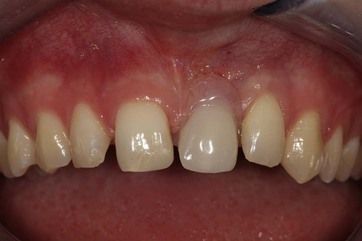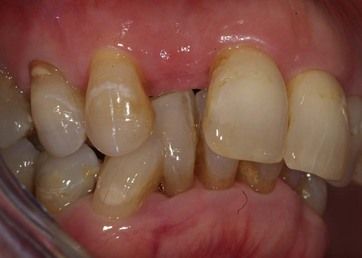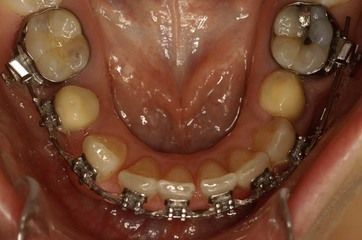Chapter 16
Indications for dental implant treatment
Patients often present with a desire to replace missing teeth or are faced with the need to have teeth extracted for a variety of reasons (< ?xml:namespace prefix = "mbp" />
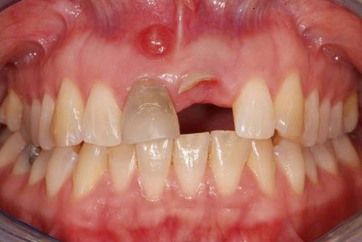
Fig 16.1 Both of the central incisors have suffered irreparable damage as a result of trauma. Periradicular infection at the upper right central incisor is manifest as a fluctuant swelling on the buccal mucosa.
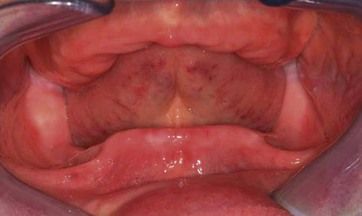
Fig 16.2 An edentulous patient with loose, uncomfortable dentures who wishes to discuss the possibility of using dental implants to improve the situation.
This chapter discusses indications for dental implants by considering the factors shown in
Table 16.1 Indications for dental implant treatment
Why does the patient wish to replace missing teeth?
To improve aesthetics?
The wish to replace missing teeth is often understandably driven by a desire to smile with confidence and conform to socially accepted norms of appearance.
To improve masticatory function?
Because teeth perform keys roles in mastication of food, their absence often causes compromise in chewing function and may also indirectly affect nutritional status by influencing food choices.
To improve speech function?
The presence of teeth and alveolar structures is critical in production of certain speech sounds. Their absence can affect speech intelligibility (how an individual is able to communicate through speech).
What are the prosthodontic advantages of implant treatment?
To avoid tooth preparation and possible sequelae
Removal of tooth structure, the inevitable exposure of cut tooth surface to bacteria in saliva, and other procedures involved in attaching bridge retainers to teeth are associated with a risk of pulp necrosis and the need for either extraction or endodontic treatment (
No need for connectors between pontic and abutment teeth
Implants are ideally suited to restoring missing teeth where there are interdental spaces, particularly in the aesthetic zone (
Avoids mechanical risks of conventional bridges
The longer the span of a fixed bridge, the higher the risk of mechanical complications such as superstructure fracture or decementation of a retainer. It follows that the longer the edentulous space, the more likely it is that implants are indicated as fixed tooth replacements.
The deep complete overbite—No need to accommodate a denture connector
When the mandibular incisors contact the palatal mucosa in the intercuspal position, it is difficult to provide a removable denture because the connection to the denture tooth will often produce an occlusal interference (
Concurrent use of an implant as an orthodontic anchor
Dental implants are well suited to use as orthodontic anchors because they do not move through the alveolus when subjected to low-level prolonged (orthodontic) forces. The prosthodontic advantage lies in the ability to use a provisional restoration on an implant as a guide to orthodontic alignment and ultimately to replace the provisional restoration with a definitive one (
Linking implant restorations together
Linking natural teeth together for whatever reason is a concern because of the potential for differential tooth movement causing failure at the tooth–restoration interface that can be difficult both to diagnose and to manage. Because implants have negligible differential movement, linking them together is prosthodontically acceptable (
Stay updated, free dental videos. Join our Telegram channel

VIDEdental - Online dental courses




